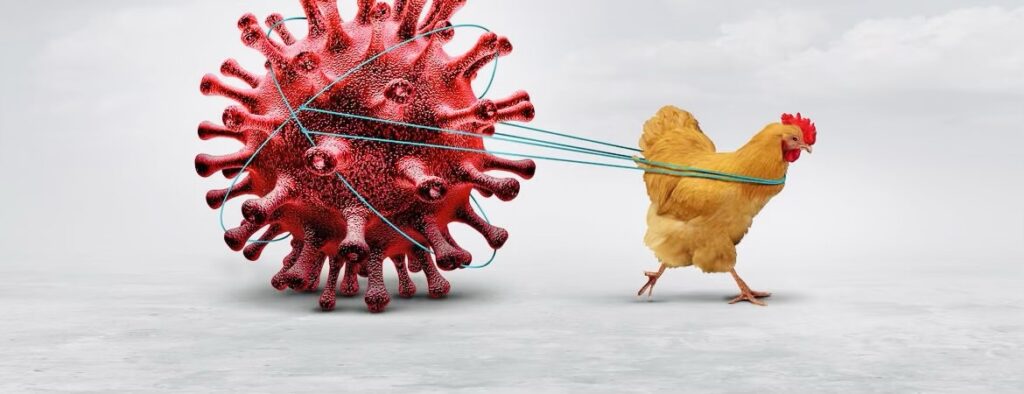Meta Description:
A recent outbreak of H5N1 bird flu in U.S. dairy cow herds has raised concerns among scientists and health officials. Learn what this means for public health, food safety, and what components are causing the most alarm.
A New Turn in the H5N1 Story
The H5N1 avian influenza virus—commonly known as bird flu—has long been associated with wild birds and poultry. However, in a surprising and troubling development, it has recently been detected in dairy cows in several U.S. states, marking the first time this virus has been found in cattle. This unexpected cross-species jump has health officials and researchers on high alert.
While no human cases have been directly linked to the dairy cow outbreak so far, the presence of H5N1 in livestock opens up new pathways for potential transmission and mutation. Let’s break down what’s happening, why scientists are concerned, and what it means for you.

Where Has H5N1 Been Detected in Cows?
As of April 2025, H5N1 infections in dairy cattle have been confirmed in at least nine states, including Texas, Kansas, and Idaho. The initial cases involved cows showing signs of reduced milk production, thickened milk, and mild respiratory issues. Subsequent testing confirmed the presence of the highly pathogenic avian influenza virus.
The virus was also found in unpasteurized milk samples and nasal swabs from infected cows, indicating that the virus can replicate in the mammary glands and respiratory tract of cattle—a behavior previously unobserved in this species.
How Did Bird Flu Reach Cows?
Scientists suspect the virus may have jumped from infected wild birds—especially waterfowl—directly to cows. One possibility is that cattle were exposed to contaminated feed, water sources, or bird droppings in pastures. However, the exact mechanism is still under investigation.
This unusual jump from birds to cows is a reminder of how zoonotic diseases (those that jump from animals to humans or across animal species) can behave unpredictably. Cross-species transmission increases the risk of viral mutations, which could eventually lead to strains that are more transmissible to humans.
Why Are Scientists So Concerned?
The outbreak in dairy cattle has revealed specific virological and biological developments that are especially worrisome to experts:
1. Unusual Replication in Mammals
H5N1 has historically struggled to replicate efficiently in mammals. But in infected cows, the virus appears to be replicating at higher rates than expected, particularly in the respiratory tract and mammary glands. This adaptation suggests a potential evolution toward better mammalian transmission.
2. Viral Shedding in Milk
Infected cows are shedding the virus in their raw milk, which is a major red flag. While pasteurization kills the virus and makes milk safe for consumption, raw milk products could become a significant risk factor for viral transmission to humans or other animals.
3. Genetic Mutations Detected
Preliminary genomic sequencing of the H5N1 samples from cattle has revealed mutations in the PB2 and HA genes—known markers for mammalian adaptation. These mutations don’t necessarily mean a human pandemic is imminent, but they indicate the virus is experimenting with new biological territory.
Could Humans Get Infected?

So far, there has been one reported case of human infection linked to this cattle outbreak—a farmworker who experienced mild eye irritation after exposure to infected milk. The individual has since recovered, and no additional human cases have been confirmed.
The Centers for Disease Control and Prevention (CDC) maintains that the current risk to the general public remains low. However, health authorities are urging increased precautions for farmworkers, veterinarians, and others in close contact with infected livestock.
Is the U.S. Food Supply Safe?
Yes—for now. The U.S. Department of Agriculture (USDA) and Food and Drug Administration (FDA) have assured the public that commercial milk and beef remain safe to consume. Here’s why:
- Pasteurization destroys the H5N1 virus, so commercially available milk poses no threat.
- Cows that are ill or test positive for the virus are not permitted to enter the food chain.
- Routine testing of meat and dairy products has not shown any presence of infectious virus in the food supply.
However, the outbreak underscores the importance of avoiding raw (unpasteurized) dairy products, which could carry a higher risk if sourced from infected farms.
What Are Health Officials Doing?
State and federal agencies have launched a coordinated response to contain the outbreak and monitor its progression:
- Quarantine and movement restrictions on infected herds.
- Enhanced biosecurity protocols for farms and livestock transport.
- Increased surveillance in both animal and human populations.
- Public health guidance for workers and veterinary professionals.
In parallel, researchers are studying the virus’s genetic profile and tracking any further mutations that could increase its pandemic potential.
What Can You Do to Stay Safe?
Even though the risk to the public remains low, it’s still wise to take the following precautions:
- Avoid raw milk and unpasteurized dairy products.
- Practice good hygiene if you live near or work with livestock.
- Stay informed through updates from the CDC, USDA, and local health departments.
- Report any unusual illness in livestock to a veterinarian or local animal health authority.
Looking Ahead: A Wake-Up Call for Zoonotic Surveillance
The H5N1 outbreak in U.S. dairy cattle is a reminder of how rapidly animal viruses can adapt and move across species boundaries. It also highlights the urgent need for stronger zoonotic disease surveillance, particularly at the animal-human interface.
As scientists continue to monitor the virus and its mutations, the hope is that early detection and proactive containment will help prevent wider transmission—both among animals and people.
Key Takeaways:
- H5N1 bird flu has been detected in dairy cows across several U.S. states.
- The virus is replicating in cows’ respiratory and mammary systems—an unusual adaptation.
- Raw milk from infected cows has tested positive for the virus, though commercial milk remains safe.
- Genetic mutations suggest the virus is adapting to mammals, warranting close surveillance.
- Human risk is currently low, but caution is essential, especially for those working with livestock.
